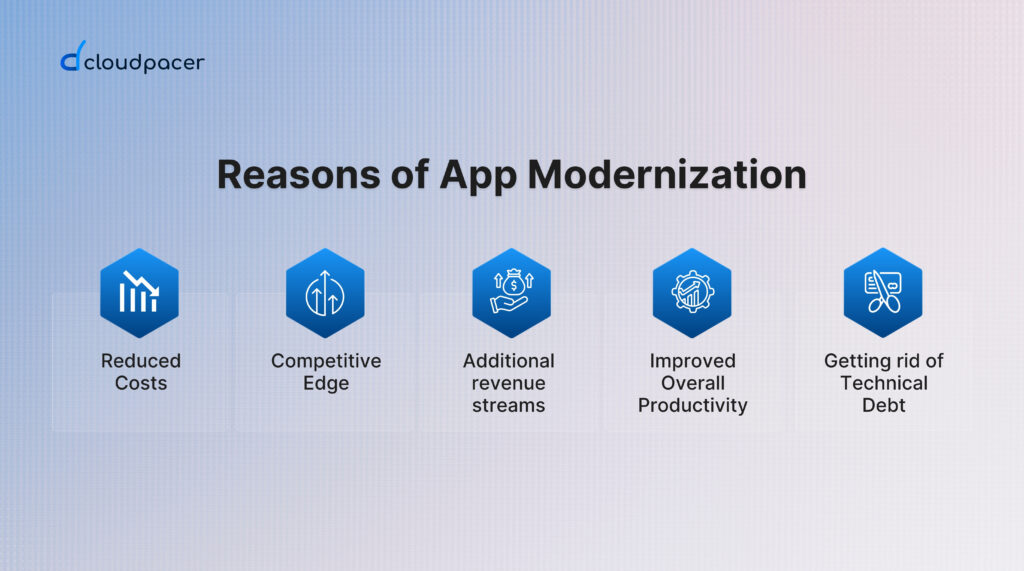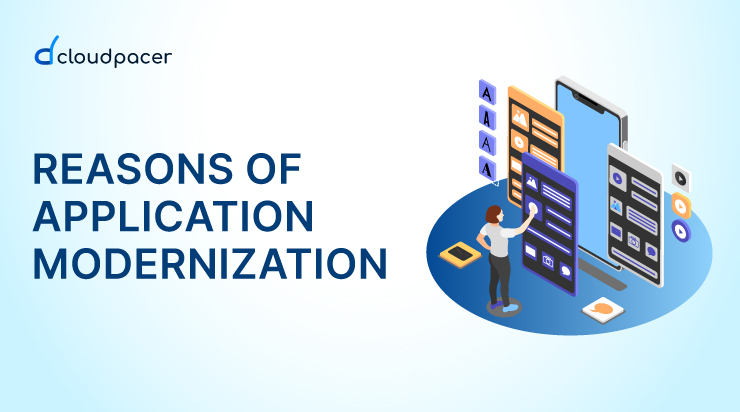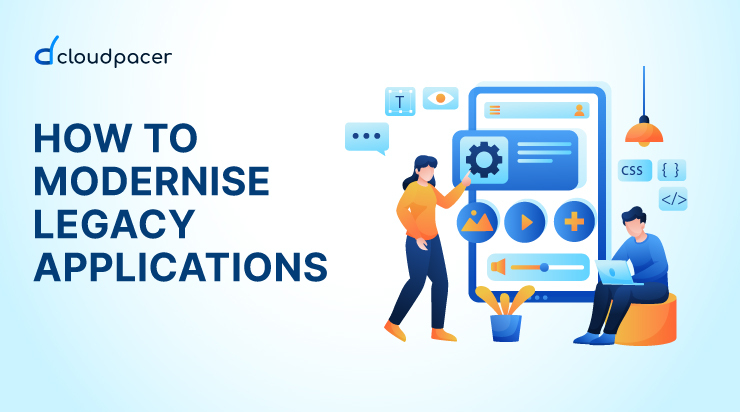Businesses have to stay competitive in the current digital era. As technology frameworks change frequently, the legacy application struggles to cope with the challenges and an essential strategy to remain afloat is application modernization. According to a study by Mckinsey about 91% of companies are currently engaged or planning to revamp their applications. Legacy systems hold back 88% of businesses from using modern tech. Though cloud tech and new programming models exist, they cost $337 million a year to maintain.
Application modernization is the process of improving your app. It aims to enhance the user experience and increase ROI. The key factors for migrating and upgrading your app are cost, emerging tech, and serverless cloud integration. You also need to consider microservice architectures. So, the goal is to run your app in a high-ROI environment.
Not every business needs to worry about modernising their application. Unless your application is strategic to the business, the cost should outweigh the benefits. Enterprises are often hesitant to invest in modernization, but many times these investments pay off quite quickly.
The three main reasons why you should modernize your applications are:
- More agility
- Better user experiences
- Reduced expenses
As the pace of modernization in every industry continues to accelerate keeping up with changing technology, to exceed and fulfil user expectations, and incorporating new features is imminent. This is why your applications need to evolve as well.
Achieve faster deployment time and agility

The development and deployment of newer versions of legacy applications is a complex task and quite time consuming. By utilising container orchestration softwares like Kubernetes to quickly deploy your web application, and by using DevOps practices such as CI/CD, companies can initiate their application modernization process and deploy applications quickly with greater ease.
Furthermore when businesses refactor by dividing monolithic apps into smaller deployable units and ultimately microservices, they will be able to update individual parts of their app; and, if they use CI/CD they can revise the updates in case there are any issues.
Easier development of new, bigger features
Many enterprise-level applications that experienced rapid growth accumulated significant technical debt because different individuals developed them over time. Technical debt burns money and consumes resources for the application to be up and running. Moreover, it makes it harder to add new features and development of significantly large changes. Hence it makes sense to rearchitect and modernise your applications. By revamping your applications, you accelerate the digital transformation process of the business.
Using cloud-native designs and containers, like Kubernetes or OpenShift, we should update key apps to run on a future-ready platform. This will provide a more stable, long-term platform and ongoing support from operations teams. OpenShift can run on-site and on various public clouds. So, it is a top choice for businesses with future-ready goals.
Elevate operational efficiency
An efficient way to consistently manage your enterprise app is to run them on container platforms like Kubernetes or OpenShift. It doesn’t matter which programming language, application stack or runtimes are used, Everything is a container. It also requires less time to establish, does not require any organisational changes and makes the operations more efficient and cost effective too.
Better experiences and improved UX
The emergent need to modernise applications arises from the call to innovate and provide engaging user experiences. Application modernization can greatly improve the user experience, and it can also enhance the technology experience for developers.
Application users have the last say whether an application works or not, which is the reason we should attempt to give great Ui/UX. Legacy apps often have flaws. New tech, like AI and the cloud, can fix them. For instance, building new and better UIs, versatile applications, or APIs, which can assist with giving quicker response times, customisations, and the sky is the limit from there.
Enhanced developer productivity
Containers help us work better because they fix the “it works on my computer” problem. Also, setting up development environments goes quicker. When we work faster, we enjoy it more, making us motivated and efficient. Using containers and service-based designs, businesses can use many programming languages for different services. Managers can hire more developers because not every developer knows Java or Cobol. This also allows us to update our skills and become more useful to our teams and companies, securing our careers for the future.
Cost Effective
It always comes down to cost when the decisions for tech modernizations are being discussed. Decision makers must remember that application modernization is not cheap. But, running on outdated systems is far more expensive. It’s important to explore some cost benefits. They help us understand the impact of application modernization.
Reduced resource usage
Many business apps use virtual machines. Using containers for these apps can save many resources, especially in memory. Also, tools like Kubernetes or OpenShift can manage workloads more effectively than virtual machines. Likewise, new development libraries, runtimes, and tools, like OpenJ9, help save resources too. OpenJ9 uses less than half the memory of other JVMs. Often, using containers and modern libraries does not need code changes at all.
Reduced license costs
Traditional commercial software usually has license fees. Due to open-source popularity, many traditional options can be swapped with open-source software, which often has paid support available. For instance, WebSphere Application Server Network Deployment is a traditional commercial software. It can often be replaced with Open Liberty, an open-source project. Numerous open-source projects have active communities offering free assistance and repairs.
Lower support expenses
At times, older applications can cost a lot, especially when official support for the servers or platforms has ceased or when it’s hard to find developers to work on the code. Sometimes, these older applications can be phased out. Other times, they could be swapped for SaaS solutions. For instance, a vacation planner app that is 20 years old can be substituted with various SaaS or open-source options.
Cloudpacer Leveraging Application Modernization
Application Modernization Use Case: Autocare E-Commerce Platform
YupUp’s WordPress platform struggled to meet rising demands. It faced major challenges. They required a complete overhaul to evolve into a feature-rich, scalable platform capable of supporting their growing operations and delivering exceptional user experiences.
The goal was clear, to stay competitive and relevant in the market.
Collaborating with Cloudpacer, YupUp focused on revitalizing its legacy system. Migrated the platform from WordPress to a modern, customized architecture built with ReactJS, NextJS, NestJS, and MongoDB to deliver enhanced performance and adaptability. Also, AWS Elastic Load Balancer (ELB) was added to distribute incoming traffic. It ensures optimal performance and scalability to meet growing user demands.
The metamorphosis led by Cloudpacer was transformative for YupUp. This overhaul not only enhanced the design but also the user experience of their platform . As a result, YupUp witnessed a 300% scalability boost with 200% increase in User registration and attracting new business. The shift to a web-based platform was particularly crucial in adapting to the modern remote workforce and broadening their market presence.
As developers, it is important that we explain why we may need to update our applications (or not) to help shape our organization’s plans for modernization. Key reasons include being more agile, improving user experiences, and cutting costs. These are vital in deciding the priority of upcoming projects.
Our application modernization services are designed to future-proof businesses in today’s digital landscape. We focus on understanding your current environment, identifying key needs, and implementing a strategy that aligns seamlessly with your business objectives.
Ready to accelerate your applications to the next level?

